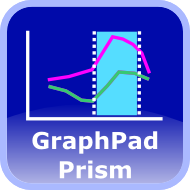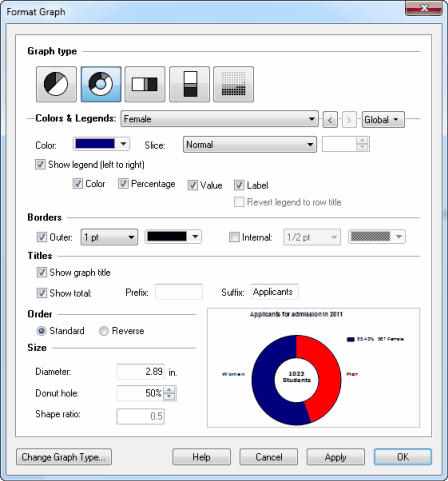

Analyses were performed using Prism 8 software (GraphPad, La Jolla, CA). You may show these graphically in some diagram (a pie chart, a dot chart. The result, on the layout, is a depth chart, with the X variable on the vertical axis and the Y variable (and its error bars) plotted on the horizontal axis. Pie charts were generated to illustrate changes in immune cell composition in. Review and cite GRAPHPAD PRISM protocol, troubleshooting and other methodology. Go to the second (Size and Location) tab, and choose to rotate 90 degrees clockwise. become its own pie chart, and each value represents one slice of the pie. Double click on the graph to bring up the "Place graph on layout" dialog. Each data set column in the parts of whole table can. Select it, and rotate 180 degrees by clicking the rotate button in the lower right of the Text area in the toolbar several times.Your graph will now look like this:ħ.

Create an independent text object with the depth title. Delete the automatic X axis title (because it cannot be rotated).ĥ. Set the Y axis numbering to: Left vertical.Ĥ. Learn how to create a nested pie chart with. It is also known as a multi-level pie chart. Set the X axis numbering to: Below, vertical. A nested pie chart displays data in multiple levels or layers. Use the Format Axis dialog to change the direction of the numbering on both axes. Prism will create an XY graph with X on the horizontal axis.ģ. Enter the depth values into the X column.Ģ. This makes sense when the X variable is depth. A depth chart is an XY plot rotated so the independent X variable is shown on the vertical axis, and the dependent Y variable is shown on the horizontal axis.


 0 kommentar(er)
0 kommentar(er)
